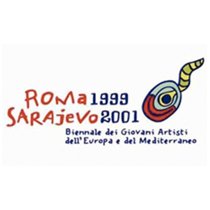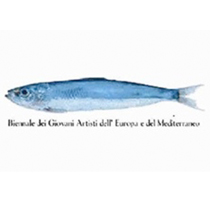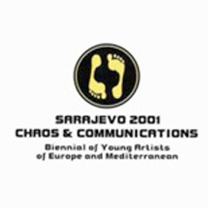29 May – 22 June 1999
For the city the Biennial represented an opportunity to improve the guidelines it had outlined in the previous years with regard to the field of youth policies and in particular to give birth, by the City of Rome, to Zoneattive, a private company owned by the City that in the following years was the main local actor in the production of contemporary cultural events. Moreover, the Biennial changed the urban destiny of one of the fundamental quadrants of the city, contributing to the development of the old slaughterhouse of the city, the “Mattatoio of Testaccio”, main venue of the Biennial, changing its use for cultural activities.
The Rome editions proposed a new disciplinary articulation that grouped together the traditional disciplines into the following ones: Applied Arts, Visual Arts, Cinema and Video, Music, Writing, Contemporary Music, Gastronomy, Fashion, Architecture and Perfromance. Furthermore, internationally renowned artists and intellectuals agreed to curate the various sections: Manuel Vazquez Montalban for Writing, Jannis Kounellis for Visual art, Javier Mariscal for Applied arts, Gianfranco Vissani for Gastronomy, Ferzan Ozpetec for Cinema, the band Agrcantus for Music, Jean Claude Gallotta for Performance, Veniero Rizzardi for Contemporary music, Ennio Capasa (Costume National) for Fashion and Zaha Adid for Architecture.
In order to give strength and visibility to the most generally cultural dimension, Rome also hosted a series of conferences that stimulated the debate around the theme of the Biennial: the Other.
Theme: the Other
The theme of this edition was The Other, conceived as the relation with diversities and mostly inspired by the special link between Rome and Sarajevo. The logo of the event was designed by Javier Mariscal, Spanish designer who previously realized the logo for the Barcelona Olympic Games.
Numbers
The Biennial of Rome hosted the works of more than 600 artists from 21 Countries (Albania, Algeria, Bosnia-Herzegovina, Cyprus, Croatia, Egypt, France, Jordan, Greece, Israel, Italy, Lebanon, Malta, Morocco, Palestine, Portugal, Republic of San Marino, Spain, Slovenia, Turkey, Tunisia) and 3 host Countries (Finland, Hungary and Serbia).
The Biennial was also the occasion for an international architecture competition for the design of the Sarajevo Concert-Hall, which would be built in the Parliament Square. To the pre-selection were sent more that 400 projects and the competition ended up with the selection of the winning project (from the architectural office UFO). Although there was a winner, the project couldn’t be realized.
Moreover, like in Turin, a Biennial Off was organized, with a rich program, which included hundreds of local artists. Nearly 90.000 people visited the complex of the Mattatoio.
Some of the most outstanding works of this edition were presented by: Accademia degli Artefatti, theatre company from Rome, Vasco Araujo, visual artist from Portugal, Enna Chaton, visual artist from Marseille, Ziga Kariz, visual artist from Ljubljana, Andreja Kuluncic, visual artist from Rijeka, Giovanni Davide Maderna, video-maker from Milan, Arnaud Mercier, graphic and interactive designer and video-maker from Marseille, Polys Peslikas, visual artists from Cyprus, Tobias Putrih, visual artist from Ljubljana, Second, rock band from Spain, Muruvvet Turkyilmaz, visual artist from Turkey and Zu, band from Rome.
Venues
All the exhibitions took place in the Mattatoio of Testaccio, built at the beginning of the century to industrialize the slaughter of livestock and abandoned for almost 20 years.
The Biennial represented the occasion to develop the entire complex and was the start for a renewal project for a multidisciplinary Cultural Production Centre: La Pelanda, 6.000 squared metres, finally inaugurated on February 2010.
Albania: Ministry of Culture Youth Council; Algeria: Association ABIT; Bosnia-Herzegovina: City of Sarajevo, International Winter Festival of Sarajevo; Cyprus: Ministry of Education; Croatia: Moderna Galerija Rijeka; Egypt: Ministry of Culture, Egypt Academy in Italy; France: City of Lyon, City of Marseille, City of Montpellier, City of Paris; Finland: City of Helsinki; Jordan: Ministry of Culture; Greece: Ministry of Culture, City of Thessaloniki; Israel: City of Tel-Aviv, Bezalel Academy of Art and Design; Italy: City of Rome, City of Ancona, City of Arezzo, City of Bologna, City of Campobasso, City of Caserta, City of Catania, City of Catanzaro, City of Ferrara, City of Florence, City of Forlì, City of Genoa, City of Grosseto, City of Messina, City of Milan, City of Modena, City of Palermo, City of Padua, City of Parma, City of Pisa, City of Prato, City of Reggio Emilia, City of Siracusa, City of Turin, City of Trieste, City of Udine, City of Venice, ARCI Italy, ARCI Bari, ARCI Friuli Venezia Giulia, ARCI Milan, ARCI Pescara, ARCI Turin; Lebanon: Lebanon Association Cultural Movement; Malta: Association Inizjamed; Morocco: City of Casablanca; Palestine: Ministry of Culture and Arts; Portugal: Portuguese Institut for Youth, Clube Portugues de Artes e Ideas; Republic of San Marino: Public Education Department; Spain: City of Almeria, City of Barcelona, City of Madrid, City of Malaga, City of Murcia, City of Seville, City of Valencia, RAI Barcelona; Slovenia: SKUC Students Cultural Centre; Tunisia: City of Tunis; Hungary: European House; Serbia: Fund for an Open Society; Open University of Subotica
Organizers
City of Rome
Francesco Rutelli – Mayor of the City
Fiorella Farinelli – President of the International Biennial Committee and Town Councillor for Youth
Gianni Borgna – Town Councillor for Cultural Politics
Domenico Cecchini – Town Councillor for Territorial Politics
Paolo Gentiloni – Town Councillor for Tourism and International Relations
Amedeo Piva – Town Councillor for Social Politics
Stefano Tozzi – Town Councillor for Public Property
Roberto Giachetti – Head of the Mayor’s Cabinet
Pietro Barrera – General Director
Maurizio Venafro – Head of the Mayor’s Office
Marcello Fiori – Vice-Head of the Mayor‘s Cabinet
Antonio Calicchia – Director of Cultural Politics Department
Sylvana Sari – Director of Educational and Youth Politics Department
Luisa Zambrini – Director of Public Property Department
Claudio Saccotelli – Director of Youth Office
Raffaella Chiodo – International Cooperation
Coordination: Paolo Cesari, Mario Donati, Franco Michetti, Giuseppina Nurra, Gabriele Scabardi
Show: Raffaele De Lio, Roberta Sorace, Massimo Tiberi
Superintendency
Roberto Del Signore
Organizing Committee
Director
Luca Bergamo
Zone Attive
Emanuele Bevilacqua – President
Gabriella Carosio, Flaminia Nardone – Board of Directors
Palazzo Delle Esposizioni
Renato Nicolini – President
Edoardo Maggini – Administration
General Coordination
Alessandro Volterra
Administration Coordination
Massimo Feliziani
Administration
Sabrina Amicone, Angela Perrone
Secretariat
Sabina Mastrangelo, Lucia Serpieri
Production Coordinator
Giancarlo Campora
Production
Marcello Bellini, Fabio Rampelli, Maurizio Gigante, Antonio Paone
Organization Coordination
Luca Fornari
Organization
Davide Capizzi, Francesca Covelli, Silvia Da Vite, Fabiana D’Urso, Cristina Loriga, Filomena Pucci
Set Up Planning Coordination
Roberto Malfatto
Set Up Planning
Roberto Candelori, Luca De Vecchis, Giacomina Di Salvo, Luca Pizzo
Educational Activities Coordination
Stefano Cristante
Educational Activities
Marilia Cioni, Emi Cipriano
Young Artists Research
Davide Bennato, Sara Belleni, Andrea Miconi, Maria Teresa Torti
Cast Coordination
Simona Capecchi
Hospitality
Serena Ferrari
Television Production
Nicole Leghissa
Planning Organization
Giordana Lappon
Gastronomy Coordination
Giuseppina Bonerba
International Cooperation Coordination
Flavio Mongelli
Visual Arts Coordination
Flaminia Nardone
International Relations Coordinator
Gianna Nicoletti
Music Coordination
Emiliano Paoletti
Literature Coordination
Carina Pons
Architecture Coordination
Gabriella Raggi
Video and Cinema Coordination
Vincenzo Rinaldi
Contemporary Music Coordination
Caterina Santi
Workshop of Sarajevo Coordination
Alessandro Stillo
Fashion Coordination
Paola Tassinari
Applied Art Coordination
Paola Vassalli
Show Coordination
Monique Veaute
Curators
Javier Mariscal – Applied Arts
Jannis Kounellis – Visual Arts
Ferzan Ozpetec – Cinema And Video
Agricantus – Music
Manuel Vazquez Montalban – Literature
Jean Claude Gallotta – Shows
Veniero Rizzardi – Contemporary Music
Gianfranco Vissani – Gastronomy
Ennio Capasa – Fashion
Supervisor of Architecture Contest
Zaha Hadid
Communication Coordination
Loredana Di Guida
Communication
Celeste Bertolini, Gioacchino De Chirico, Mara Mariotti, Giorgio Bonifazi Razzanti, Stefania Vallati, Anna Borioni, Anna Attisano, Piergiorgio Paris, Marco Santarelli



